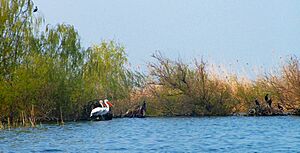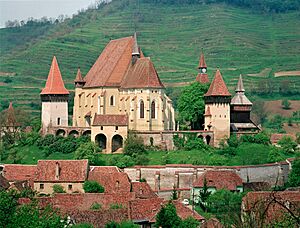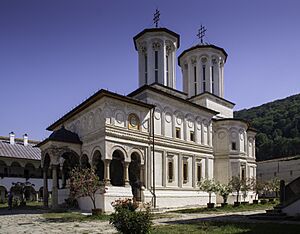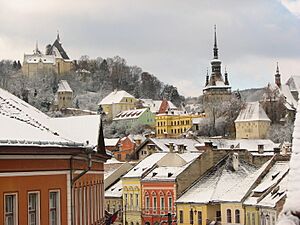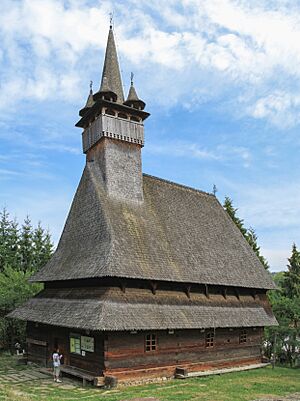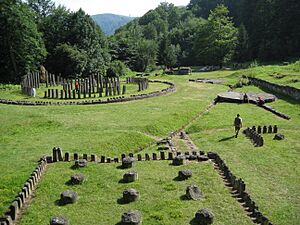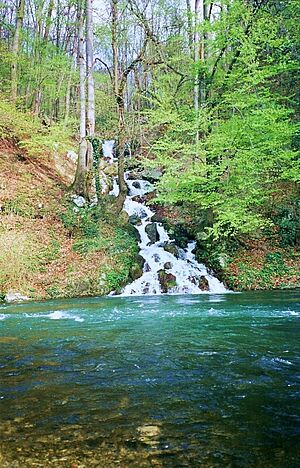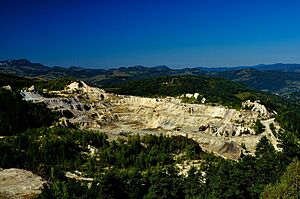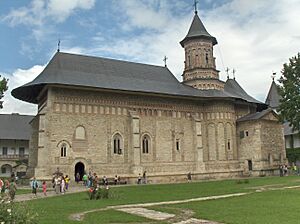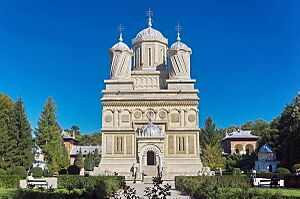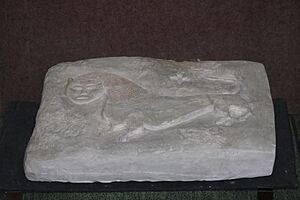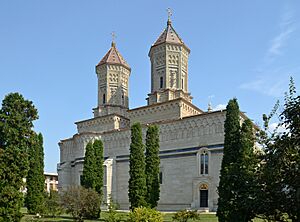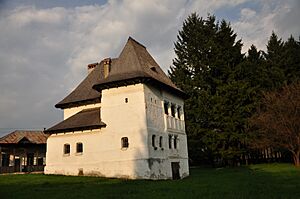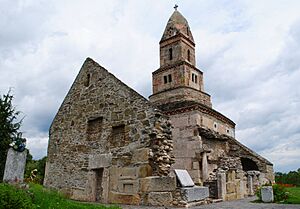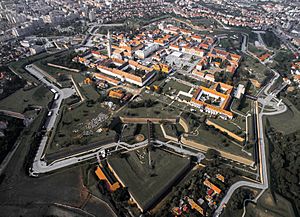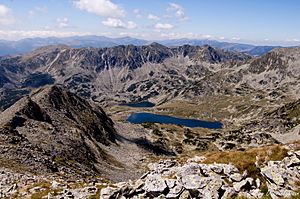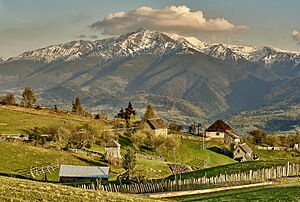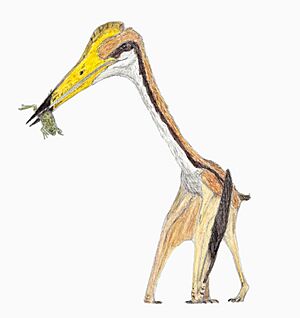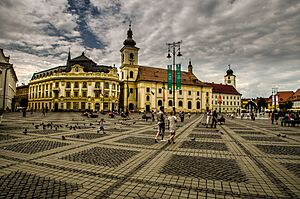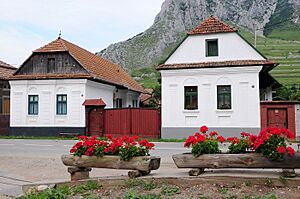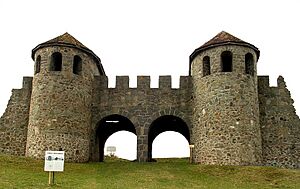List of World Heritage Sites in Romania facts for kids
UNESCO (United Nations Educational, Scientific and Cultural Organization) helps protect important places around the world. These places are called World Heritage Sites. They can be important for their culture or natural heritage. UNESCO started this program in 1972.
Cultural sites include old buildings, sculptures, or archaeological areas. Natural sites are special places like forests, mountains, or areas where rare animals and plants live. Romania joined this program on May 16, 1990. This made its historical places able to be added to the list.
As of 2022[update], Romania has nine World Heritage Sites. Seven of these are cultural sites, and two are natural. The first site, the Danube Delta, was added in 1990. More sites were added in 1993 and 1999. Some sites were even made bigger later on.
The newest site is the Roșia Montană Mining Cultural Landscape, added in 2021. It was immediately put on the list of World Heritage in Danger. This is because there are plans to start mining there again. One site, the Ancient and Primeval Beech Forests of the Carpathians and Other Regions of Europe, is shared with 17 other European countries. Romania also has 16 sites on a "tentative list." These are places that might become World Heritage Sites in the future.
Romania's World Heritage Sites
UNESCO lists sites based on ten different rules, called criteria. Each site must meet at least one of these rules. Rules 1 to 6 are for cultural sites. Rules 7 to 10 are for natural sites. * Shared with other countries ![]() In danger
In danger
| Site Name | Image | Location | Year Listed | UNESCO data | What Makes It Special |
|---|---|---|---|---|---|
| Danube Delta | Tulcea County | 1991 | 588; vii, x (natural) | The Danube river flows into the Black Sea here. This delta is Europe's largest wetland area. It is home to over 300 types of birds and 45 types of freshwater fish. This includes rare sturgeons. You can also find European mink, European wildcat, and Eurasian otter here. | |
| Fortified Churches in Transylvania | Sibiu, Alba, Harghita, Brașov, and Mureș County | 1993 | 596bis; iv (cultural) | This site includes seven villages with fortified churches. People called Transylvanian Saxons built them between the 13th and 16th centuries. The way these villages are set up has stayed the same since the Middle Ages. Six villages were listed in 1993. The village of Biertan (pictured) was added in 1999. | |
| Horezu Monastery | Vâlcea County | 1993 | 597; ii (cultural) | This monastery in Horezu was built in 1690. Constantin Brâncoveanu, a prince of Wallachia, founded it. It is a great example of the Brâncovenesc style of architecture. The monastery is famous for its detailed decorations and paintings. A school for painting was also started here in the 18th century. | |
| Churches of Moldavia | Suceava County | 1993 | 598bis; i, iv (cultural) | This site has eight churches built in the 15th and 16th centuries. Their outside walls are covered with frescos. These paintings are inspired by Byzantine art and show Bible stories. They are still in very good condition. The Sucevița Monastery church (pictured) was added to the list in 2010. | |
| Historic Centre of Sighișoara | Mureș County | 1999 | 902; iii, v (cultural) | The old town of Sighișoara dates back to the 12th century. It is a great example of a small, fortified medieval town. It was built by the Transylvanian Saxons. These German merchants and craftspeople have lived in the area for over 850 years. Their culture is now mainly seen through these old buildings. | |
| Wooden Churches of Maramureş | Maramureș County | 1999 | 904; iv (cultural) | This site includes eight wooden churches from the 17th and 18th centuries. They mix Orthodox and Gothic styles. Many have tall, thin clock towers and roofs covered with wooden shingles. The Church of Saint Nicholas (pictured) is one of them. | |
| Dacian Fortresses | Hunedoara County and Alba County | 1999 | 906; ii, iii, iv (cultural) | Six fortresses make up this site. They were built around the 1st century BCE and CE. They helped protect against Roman attacks during the Roman-Dacian wars. These forts are good examples of Iron Age Europe defenses. They include Sarmizegetusa and Costeşti-Cetăţuie. | |
| Ancient Beech Forests* | several sites | 2017 | 1133quater; ix (natural) | This site protects untouched temperate forests. They show how European beech trees spread across Europe after the last ice age. The site started in 2007 with forests in Slovakia and Ukraine. It has been expanded several times. Now, it includes 12 areas in Romania and forests in 17 other countries. | |
| Roșia Montană Mining Cultural Landscape |
Alba County | 2021 | 1552rev; ii, iii, iv (cultural) | Roșia Montană is in the western Carpathians of Romania. This area has been a gold mining center since the Bronze Age. It was a main source of gold in Europe before America was discovered. Important Roman remains are here from the mining town of Alburnus Maior. The site is now endangered because of plans to restart mining. |
Places on the Tentative List
Countries can suggest sites they think should become World Heritage Sites. This is called a "tentative list." A site must be on this list before it can be officially nominated. As of 2022[update], Romania has 16 sites on its tentative list.
| Site Name | Image | Location | Year Listed | UNESCO Criteria | What Makes It Special |
|---|---|---|---|---|---|
| Neamț Monastery | Neamț County | 1991 | i, ii, iv (cultural) | This monastery was founded in the 14th century. Its church was built in the late 15th century by King Stephen III of Moldavia. It is a key example of Moldavian religious architecture. The monastery was an important center for culture, with a printing press and a school. | |
| Byzantine and Post-Byzantine Churches in Curtea de Argeș | Argeș County | 1991 | i, ii, iv (cultural) | Curtea de Argeș was the old capital of Wallachia. The royal court from the 13th to 16th centuries is now in ruins. The Church of St. Nicholas is from the 14th century. The Curtea de Argeș Cathedral (pictured) is from the 16th century. | |
| Sculptures of Constantin Brâncuși | Gorj County | 1991 | i, ii (cultural) | The Romanian sculptor Constantin Brâncuși created these monuments in Târgu Jiu. They honor soldiers who died in World War I. The group has three sculptures: The Table of Silence, The Gate of the Kiss, and the Endless Column. | |
| Cave Complex from Basarabi | Constanța County | 1991 | (cultural) | This rock complex is near Murfatlar. It was an old chalk quarry that became a monastery from the 10th to 12th centuries. Walls have carvings and writings in different old languages. These include Greek, Glagolitic, Cyrillic, and Turkic runes. | |
| Church of the Three Hierarchs in Iași | Iași County | 1991 | i, iv (cultural) | This church was finished in 1639. It shows Romanian architecture that mixes Byzantine features with local Moldavian and Wallachian art. The outside walls are covered with rich, sculpted stone designs. | |
| Cule from Oltenia | several sites | 1991 | iv, v (cultural) | Cule (singular: culă) are tower-like buildings found in the Oltenia region. They were built to watch important roads. Important families used them. The Culă Greceanu (pictured) is an example. | |
| Densuș Church | Hunedoara County | 1991 | i, iv (cultural) | This church was built by the 14th century. It stands on the site of an old Roman temple. Materials from the temple were used to build the church. The paintings inside the church are from the 15th century. | |
| Historic Town of Alba Iulia | Alba County | 1991 | iv, v, vi (cultural) | Alba Iulia is built on the site of a 2nd-century Roman camp. The medieval town was surrounded by walls in the 18th century. Important buildings include the Catholic St. Michael's Cathedral from the 13th century. The Alba Carolina Citadel (pictured) is a star-shaped fort. | |
| Retezat Massif | Hunedoara County | 1991 | (natural) | This site is a natural area in the Retezat Mountains. | |
| Pietrosul Rodnei mountain peak | Bistrița-Năsăud County | 1991 | (natural) | This site is the Pietrosul Rodnei mountain peak. | |
| Sânpetru Formation | Hunedoara County | 1991 | (natural) | The Sânpetru Formation is a geological site. It has many dinosaur and other fossils from the Late Cretaceous period. The picture shows an artist's idea of a pterosaur called Eurazhdarcho, found at this site. | |
| Slătioara secular forest | Suceava County | 1991 | (natural) | This forest was nominated to be a World Heritage Site. It is now part of the larger Ancient and Primeval Beech Forests of the Carpathians and Other Regions of Europe site. | |
| The Historic Centre of Sibiu and its Squares | Sibiu County | 2004 | ii, iii, iv, v (cultural) | Sibiu was founded by Transylvanian Saxons. It was first recorded in 1191. Since 1366, it was known as Hermannstadt. It became the capital of the Saxon settlement in Transylvania. The town has three connected squares and buildings in Gothic, Renaissance, and Baroque styles. | |
| The old villages of Hollókő and Rimetea and their surroundings* | Alba County | 2012 | v (cultural) | This site is an extension to the Hollókő village in Hungary, which is already a World Heritage site. Rimetea developed in the 17th and 18th centuries. It has been kept as a living example of old rural life. The village has a strong Hungarian community. | |
| Frontiers of the Roman Empire — The Danube Limes (Romania)* | several sites | 2020 | ii, iii, iv (cultural) | This nomination covers Roman forts along the Danube river. The reconstructed gate at Porolissum (pictured) is one example. This is part of a larger nomination with other countries. | |
| Frontiers of the Roman Empire — Dacia (Romania) | several sites | 2020 | ii, iii, iv (cultural) | This nomination includes the Roman border in the Dacian area. It was the longest land Roman border in Europe, stretching over 1,000 km (620 mi). About 100 forts and many towers have been found in Romania. |
See also
 In Spanish: Anexo:Patrimonio de la Humanidad en Rumania para niños
In Spanish: Anexo:Patrimonio de la Humanidad en Rumania para niños


